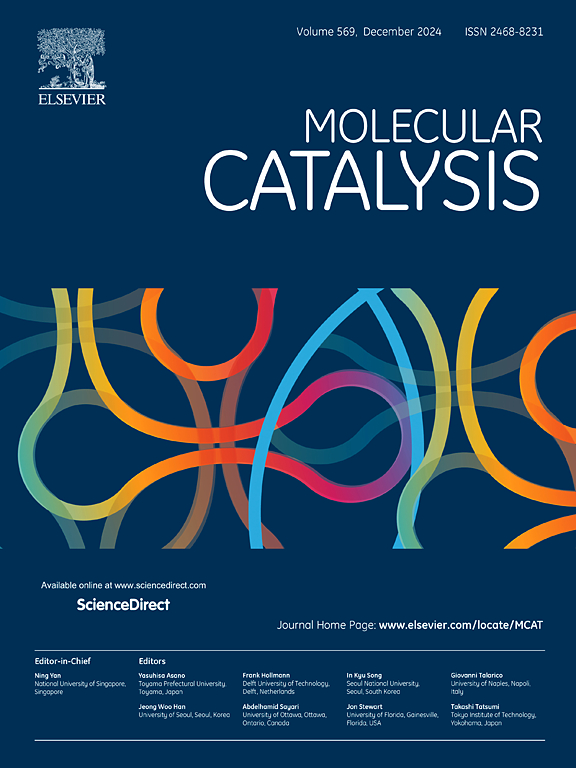MOFs derived acid-base regulation strategies of CuZnAl catalyst for boosting CO2 hydrogenation to methanol
IF 3.9
2区 化学
Q2 CHEMISTRY, PHYSICAL
引用次数: 0
Abstract
Acid-base synergistic effect is crucial in adjusting the catalytic performance of CO2 hydrogenation to methanol, an efficient CO2 emission reduction and carbon recycle strategy. Two MOFs-derived catalysts (CZ-MIL, CA-ZIF) with opposite acid-base properties were tailored by using MIL-68 (Al) and ZIF-8 (Zn) as precursors, and the above two MOFs precursors were hybridized (C-ZAx) to control the acid-base property of the catalyst. C-ZA0.6 (molar ratio of MIL-68 (Al) to ZIF-8 (Zn)=0.6) exhibits a promising catalytic performance with CO2 conversion of 8.9 %, methanol selectivity of 61.85 %, and STY of 117.02 mg mL−1·h−1 at 4 MPa and 523 K. Combined with comprehensive analysis, it is found that methanol selectivity is closely related to weak acid sites arising from the residual skeleton of MIL-68. Acid-base synergy facilitates the hydrogenation of CO2 to methanol. The basic sites are responsible for adsorbing and activating CO2, and the acidic site helps to stabilize CO* and facilitate the further hydrogenation to methanol. This work provides a new idea and feasible method for enhancing the catalytic performance of CO2 hydrogenation to methanol.

求助全文
约1分钟内获得全文
求助全文
来源期刊

Molecular Catalysis
Chemical Engineering-Process Chemistry and Technology
CiteScore
6.90
自引率
10.90%
发文量
700
审稿时长
40 days
期刊介绍:
Molecular Catalysis publishes full papers that are original, rigorous, and scholarly contributions examining the molecular and atomic aspects of catalytic activation and reaction mechanisms. The fields covered are:
Heterogeneous catalysis including immobilized molecular catalysts
Homogeneous catalysis including organocatalysis, organometallic catalysis and biocatalysis
Photo- and electrochemistry
Theoretical aspects of catalysis analyzed by computational methods
 求助内容:
求助内容: 应助结果提醒方式:
应助结果提醒方式:


